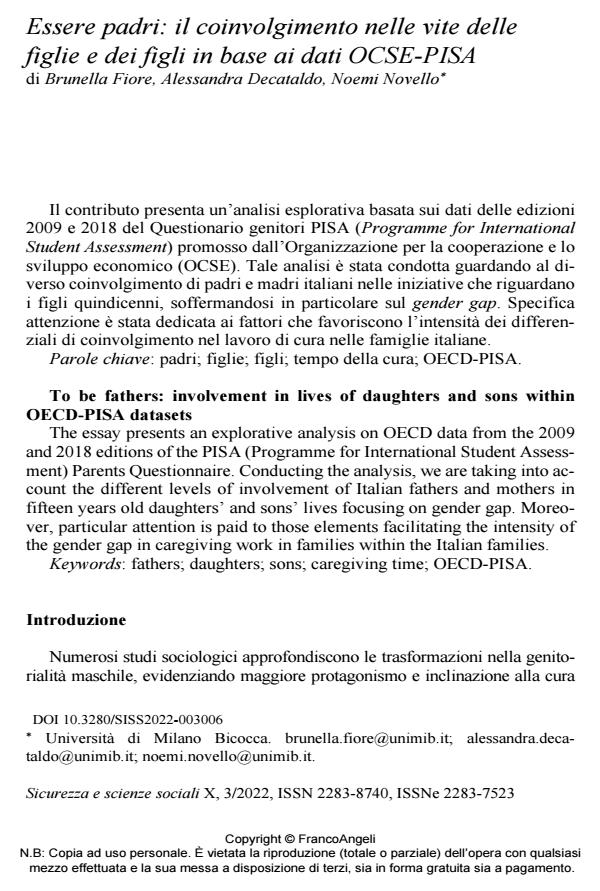Essere padri: il coinvolgimento nelle vite delle figlie e dei figli in base ai dati OCSE-PISA
Titolo Rivista SICUREZZA E SCIENZE SOCIALI
Autori/Curatori Brunella Fiore, Alessandra Decataldo, Noemi Novello
Anno di pubblicazione 2022 Fascicolo 2022/3
Lingua Italiano Numero pagine 17 P. 79-95 Dimensione file 231 KB
DOI 10.3280/SISS2022-003006
Il DOI è il codice a barre della proprietà intellettuale: per saperne di più
clicca qui
Qui sotto puoi vedere in anteprima la prima pagina di questo articolo.
Se questo articolo ti interessa, lo puoi acquistare (e scaricare in formato pdf) seguendo le facili indicazioni per acquistare il download credit. Acquista Download Credits per scaricare questo Articolo in formato PDF

FrancoAngeli è membro della Publishers International Linking Association, Inc (PILA)associazione indipendente e non profit per facilitare (attraverso i servizi tecnologici implementati da CrossRef.org) l’accesso degli studiosi ai contenuti digitali nelle pubblicazioni professionali e scientifiche
Il contributo presenta un’analisi esplorativa basata sui dati delle edi-zioni 2009 e 2018 del Questionario genitori PISA (Programme for In-ternational Student Assessment) promosso dall’Organizzazione per la cooperazione e lo sviluppo economico (OCSE). Tale analisi è stata condotta guardando al diverso coinvolgimento di padri e madri italiani nelle iniziative che riguardano i figli quindicenni, soffermandosi in particolare sul gender gap. Specifica attenzione è stata dedicata ai fat-tori che favoriscono l’intensità dei differenziali di coinvolgimento nel lavoro di cura nelle famiglie italiane.
Parole chiave:padri; figlie; figli; tempo della cura; OECD-PISA.
Brunella Fiore, Alessandra Decataldo, Noemi Novello, Essere padri: il coinvolgimento nelle vite delle figlie e dei figli in base ai dati OCSE-PISA in "SICUREZZA E SCIENZE SOCIALI" 3/2022, pp 79-95, DOI: 10.3280/SISS2022-003006